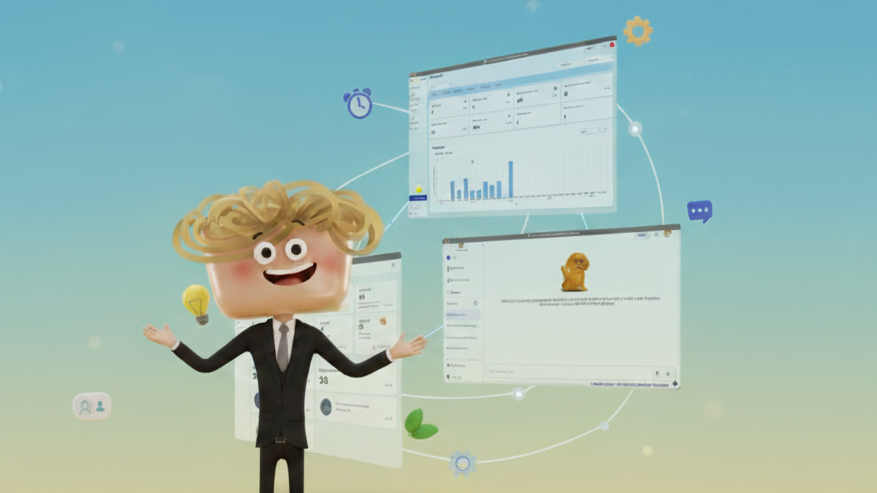Smarter Learning Pathways With AI: 8 Strategies Educators Can Use Right Now
Aug 25, 2025Personalizing learning has become one of the most talked-about promises of AI in education. But what does it actually look like in practice?
👉 As UNESCO’s work on AI in digital education shows, the role of AI in teaching and learning is growing worldwide, with important implications for both quality and equity.
In our recent premiere, From Personalization to Power Moves: Smarter Learning Pathways with AI, we explored how educators are already using AI to support students, save time, and bring structure to learning at scale.
This recap shares 8 strategies, drawn from real educator stories, that you can start exploring in your own teaching.
Published 25 August 2025 • Last updated 25 August 2025
1. Spot misconceptions early with dashboards
One lecturer noticed students were consistently struggling with a key Week 3 concept. Instead of waiting until assessments to uncover this gap, the AI dashboard highlighted it in real time. This gave her the chance to revisit the material immediately, reframe the lesson, and keep students on track.
AI dashboards give educators the visibility they often lack, turning invisible struggles into opportunities for timely support.

➡️ Learn more about how Noodle Factory dashboards work in our platform overview.
External reference: EDUCAUSE on learning analytics
2. Give quiet students a voice
Not every learner is comfortable speaking up in class. One engineering student who rarely contributed in discussions spent hours privately interacting with her AI tutor. In that safe space, she explored advanced concepts, asked questions freely, and ultimately exceeded expectations in the course.

AI tutors can become a confidence-building tool, allowing quieter learners to engage deeply without fear of embarrassment.
External reference: Brookings on balancing AI and socialization in education
3. Structure enhances personalization
Personalization is often imagined as free-form and unstructured. In reality, structure can make personalization more effective.
At one law school, case studies were organized into guided AI tutor pathways. Instead of facing hundreds of pages of material, students worked through digestible steps aligned to class discussions. They reported that the experience felt both personal and manageable, while still tied to course outcomes.
➡️ You can also try guided pathways yourself by setting up a free AI tutor in Noodle Factory.
4. Practice real-world skills with role plays
One marketing lecturer asked students to practice pitching to an AI-powered “skeptical client.” The AI role played as the customer, pushing back with tough questions. Students refined their arguments on the spot and received feedback on clarity and persuasiveness.

One student even used this exercise to prepare for an internship interview, demonstrating how role plays can bridge classroom learning with career readiness.
5. Save time with AI-generated learning outcomes
Creating detailed learning outcomes can be time-consuming, especially at the subtopic level. By uploading a single lecture transcript, one instructor generated tailored learning outcomes in minutes. These outcomes then informed quizzes, role plays, and student practice activities.

The result was better alignment between teaching materials and student engagement, while reducing preparation time for faculty.
➡️ Learn how AI-generated learning outcomes work.
6. Keep learning safe in a walled garden
Instead of exposing students to open-ended AI tools, some educators are creating private AI tutors built directly from their own course content. This creates a “walled garden” where students can explore safely, knowing the AI will remain aligned with the curriculum.
This approach balances academic rigor with the benefits of personalization, ensuring students learn within the boundaries set by their instructors
7. Move beyond the buzzword
“Personalization” is often overused in education. What matters more is enhanced learning. Enhanced learning is about sparking curiosity and creativity while staying rooted in thoughtful course design. It is not about replacing educators, but about amplifying their expertise and reach.
External reference: UNESCO on AI in digital education
8. Remember POWER: A checklist you can apply
One framework from the premiere captured the essence of enhanced learning with AI: POWER.
Here’s how you can start applying it in your own teaching:
-
Pathways: Provide students with a structured or flexible route through your content. Try setting up topic-based pathways in your AI tutor.
-
Options: Offer choices such as language support, modality (chat, voice, video), or level of difficulty.
-
Wayfinding: Build in nudges, Socratic questions, or adaptive checks to guide progress without overwhelming students.
-
Evidence: Use dashboards to track engagement, identify misconceptions, and measure progress over time.
-
Roles: Experiment with AI personas such as a Socratic tutor, a client, or a collaborator to make learning interactive.
POWER is not just a framework but a practical checklist for designing AI-enhanced experiences.
Conclusion: Bringing enhanced learning into your teaching
AI is not about replacing educators. It is about supporting you to do what you already do best: guide, challenge, and inspire students. From dashboards that reveal hidden struggles to role plays that prepare learners for the workplace, these strategies show how AI can create scalable, personalized experiences that remain rooted in good pedagogy.
👉 Try it out in Noodle Factory with a free account
See for yourself how these strategies can work in your own teaching.
About the author
Written by Marielyn K, Marketing at Noodle Factory. This article is based on the session “From Personalization to Power Moves: Smarter Learning Pathways with AI,” presented by Dr. Jim Wagstaff, Co-founder of Noodle Factory. Jim has been working with AI in education since 2018 and regularly leads sessions on AI in higher education and workplace learning.


